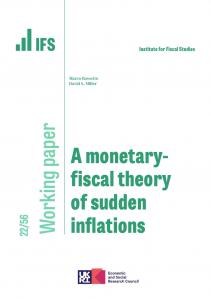There was a lot in that autumn statement. The 2p cut to national insurance contributions will put a bit of extra money into pay packets, and will get the headlines. That was the retail offering, the pre-election giveaway. This wasn’t a fiscal event just focused on an upcoming election though. Making “full expensing” in corporation tax permanent used up a lot of fiscal headroom. It is a positive move to encourage investment, but will provide no pre-election benefit. And the host of policies focused on business, as well as some reforms to the welfare benefits system, suggest a chancellor with at least half an eye on longer-term growth and reform.
You might not have guessed it from his speech, but the Office for Budget Responsibility (OBR) largely presented the chancellor with bad news. Since its March forecast it has got gloomier about the outlook for growth and thinks inflation will be higher for longer than it did back then. It also thinks we’ll be spending quite a bit more on debt interest.
It’s that higher inflation forecast which has turned out to be rather good news for Mr Hunt. It means more tax revenue, not least because income tax allowances and thresholds are to remain frozen.
Those freezes are a gift that keeps on giving. Despite the tax cuts announced yesterday the overall tax burden — tax as a fraction of national income — is still set to reach the same peak of 37.7 per cent of national income as was forecast in March. The tax cuts have done no more than prevent the tax burden rising to an even higher peak than previously planned.
Even so, we are only just, by the slimmest of margins, on course to meet the chancellor’s own fiscal rule, that debt should be falling in the final year of the forecast. Debt is essentially flat at about 93 per cent of national income over the whole period. Rather than give himself a little bit of a cushion against fiscal risks Mr Hunt opted to spend most of his extra wriggle room on tax cuts.
Those fiscal risks are serious. What the OBR gave him this month, they could easily take away before the March budget. That would leave the chancellor with a painful pre-election headache.
More seriously, all of these forecasts are predicated on some seriously — some might say implausibly — tight spending plans. The OBR reckons that, from 2025, to meet these plans cuts of more than 2 per cent a year will be required across most areas of government spending outside of health, schools and defence representing, in their words “a significant risk to our forecast”.
The bigger picture is that we, and whoever is chancellor after the next election, are going to have to face up to some hard truths. Taxes and spending are high by historic levels. But a combination of high spending on debt interest, low growth, and the demands of an ageing population mean that there is little scope to increase spending on hard-pressed public services unless tax is raised to a level even beyond its planned record high. Much faster growth is the only way out of this bind, though even that can’t be the only answer, and it is much easier to wish for than to achieve.
This article was first published in The Times and is reproduced here with kind permission.










